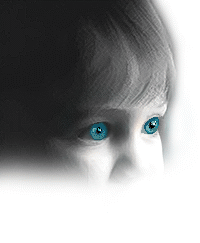
Natural Resources Canada > Earth Sciences Sector > Priorities > Canada Centre for Remote Sensing
Visual ability in 3-D

Five senses |
Humans receive information about their surroundings through five physical sensors, the eyes, ears, nose, taste receptors and sensory receptors in the skin. Of our five senses, sight provides us with the most information about our environment. Two eyes can transmit information at 4.3 million bits/sec while the maximum reception of sound by two ears is 8000 bits/sec.

Human vision |
Human vision is a complex and sophisticated system involving physiological, biochemical, neurological and psychological processes. The following is a simplified description of visual mechanics, the relationship between vision and perception, and the factors that enable us to perceive depth.
| 